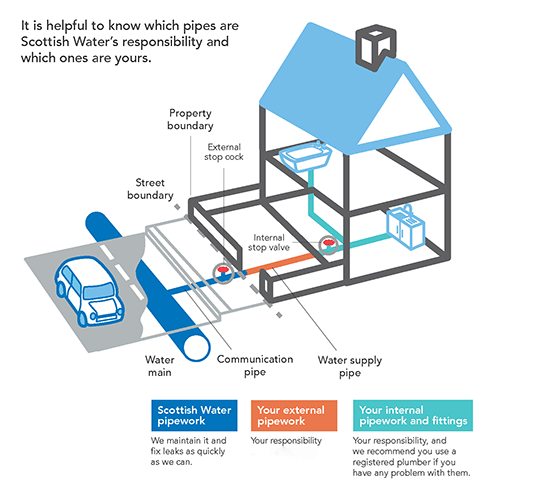Private Landlord Guidance on Lead Pipes
Scottish Water and The Repairing Standard Statutory Guidance for Private Landlords
Annex D1 D.8 - D.27
Some sections of the Repairing Standard are referred to on this page but for full context please refer to The Repairing Standard Statutory Guidance for Private Landlords (www.gov.scot) .
All privately rented properties in Scotland must not have lead pipes, fittings, or tanks in the drinking water supply from March 2024.
D.20 states “To comply with the Repairing Standard, lead pipes and lead-lined storage tanks or fittings should not be present in the drinking water supply of any privately rented property from the boundary stopcock to the kitchen tap.”
To comply with the repairing standard landlords must carry out a visual check of their property to ensure lead pipes and fittings are not present.
D.23 states “Private landlords must check visible pipework within the house to assess whether the supply runs through lead pipes. An approved plumber will be able to help with this.”
If you are still unsure if lead pipes are present after you have carried out a visual inspection and your property is older than 1970 you may request Scottish Water takes a water sample from your property.
D.24 states “If, following a visual inspection or having obtained advice from an approved plumber, a landlord is still uncertain whether there are lead pipes, or is aware of a risk as a result of these checks, tenants must be informed, provided with information on minimising risk (as set out in D.22) and a water sample must be taken for laboratory analysis.”
D.25 states “Where testing is required in a property connected to the public water supply, Scottish Water will sample the first tap directly supplied from the water main.”
We will take samples from the first accessible tap within the property. Following the results of the sample, we will investigate to understand where the lead pipes may be.
In most cases, we’re responsible for the water main in your street and the communication pipe up to and including the stop cock, at the boundary of your property. Property owners are responsible for the supply pipe, which is the section of the service pipe from the boundary to the property itself.

Lead service pipes were phased out in the 1960s and became illegal in 1969. Therefore, if your property was built after 1970, there is little chance you will have a lead communications pipe. However, you may still have internal lead pipes or lead fittings.
If your property was built after 1970 and you are concerned that you may have lead pipes. We recommend you replace any lead internal to the property and the supply pipe. We can follow up to investigate and if necessary, renew the lead communications pipe from the external stop cock to the main in the street.
The Repairing Standard Statutory Guidance for Private Landlords (www.gov.scot)





